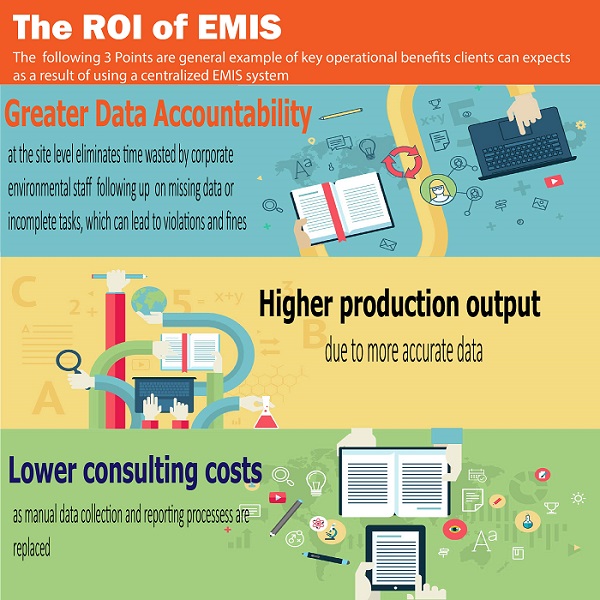Education Management Information System (EMIS)
All contemporary educational institutions rely on numerous software suites and integrated systems to operate efficiently. In the most efficient schools and colleges, an education management information system (EMIS) is used as a centralised ‘hub’ for the institution’s data and general process management.
EMISOnline
Education management information systems have only recently seen widespread adoption at schools and colleges worldwide. Digital transformation is influencing the way all sectors operate, as the world becomes increasingly reliant on digital or ‘virtual’ systems.
Essentially, an education management information system is designed to replace a long list of traditional administrative tasks with simplified digital alternatives. Not to mention, provide faculty members, students and administrators alike with access a wide variety of useful features and functionalities.
For example, whereas rudimentary spreadsheets may have once been used to monitor attendance, an EMISOnline can be used to largely automate attendance tracking and analysis of absence patterns.
But this is just one of the many practical benefits of education management information systems – both at an institutional level and a governmental level.

What Are Educational Management Information Systems?
In brief, an educational management information system is a suite of software tools and applications for the production, management and dissemination of educational information and data.
It is a facility that can be adopted by an educational institution, in order to streamline the collection, storage, integration, processing, organisation and output of important educational data.
At a state or governmental level, an EMIS can be used by a Department of Education to collect and centralise information from state-run schools and educational facilities. Such data can then be used as the basis for important policy development and decision-making, based on detailed and accurate insights collected and analysed automatically.
Ultimately, there are five basic functions all EMIS tools are designed to perform:
-
Data collection
-
Storage
-
Integration
-
Analysis
-
Dissemination
An EMIS can be put to use in any number of ways, with almost any objective (or combination thereof) in mind. It is an integrated system that combines automation with human input to ensure all necessary information is available to support the decisions, activities and operational efficiency of the institution.
The flexibility of an effective educational management information is such that the system can be tailored in accordance with the specific goals and objectives of the school or education department in question.
What Are the Main Elements of Educational Management?
It is generally agreed that there are eight primary elements in educational management – each of which must be shown the same high level of priority:
-
Educational Planning
-
Educational Administration
-
Educational Organisation
-
Educational Direction
-
Educational Co-ordination
-
Educational Supervision
-
Educational Controlling
-
Educational Evaluation
The appeal of an educational management information system lies in the fact that where appropriately deployed, it can play a major role in supporting all of these eight elements.
An EMIS serves as a central data repository, where the school or college can collect, store, analyse and use data (historic and in real-time) to benefit both the institution and its students.
For the institution, an EMIS can be used to streamline and simplify things like attendance management, transportation management, fee management, accommodation management, payroll management, staff scheduling and more. But it can also provide invaluable learning management features for the student, such as the creation of a virtual learning space or the facilitation of distance learning.
It can also be a highly effective and efficient communication tool, making it easier for students, faculty members and administrators to reach out to one another.
What is the Importance of An Education Management Information System?
The importance of EMIS adoption for the modern institution lies in the sector’s growing dependence on complex data management and digitalisation of conventional admin processes.
Specifically, the adoption of an effective education management information system targets the following goals and objectives:
-
To provide users with simplified access to the information they need to boost their efficiency at work
-
To enable decisionmakers to make more confident and informed decisions based on evidence
-
To enable the development of appropriate policies based on issues identified and institutional targets
-
To help an institution develop a clear picture of its strengths, weaknesses and opportunities for improvement
-
To enhance the learning experience of every student and benefit their education
-
To ensure efficient an appropriate allocation of resources to minimise wastage
-
To boost overall cost-effectiveness and make it easier to make important budgeting decisions
-
To contribute to the efficiency and effectiveness of all day-to-day operations to support faculty members and administrators
This is a simplified summary at best, given the flexibility and adaptability of an EMIS.
What Are the Main Features of Educational Management Information Systems?
The most useful and beneficial features of an educational management information system will vary from one institution to the next. As previously touched upon, an EMIS can be useful in the pursuit of a wide variety of objectives.
Just a few of the most typical features EMIS software provides educators and administrators with access to include the following:
-
Automated reports on potential issues like poor attendance or elevated dropout rates
-
Access to reports and information outlining issues with success rates in specific subjects
-
Performance information on educators to facilitate continuous professional development
-
Centralised storage of students’ performance data for educators and faculty members
-
Reports predicting potential future problems such as classroom or resource shortages
-
Insights comparing current and projected future performance with historic performance
-
Centralised accountancy and finance records for simplified budgeting and cost control
-
Off-site access to the system for authorised personnel when away from the campus
An EMIS has the potential to be the ultimate centralised management hub for the essential data educators, faculty members, administrators and students need for an optimum educational experience.
What Are the Most Important Characteristics of an Effective Management Information System?
In order for an education management information system to be effective, it needs to be tailored to meet the unique requirements of the institution.
In addition, it needs to guarantee:
-
The reliable and timely production of accurate information and data
-
Efficient integration and sharing of data across multiple departments
-
Appropriate use of the information and data by its users
It is not possible for an EMIS to be integrated and used effectively at a school or college, in the absence of any of the above.
What Are the Benefits of An Education Management Information System?
In short, the primary benefits of an educational management information system could be summarised as follows:
-
Decision-makers gain quick and easy access to important information
-
Elimination of human error through extensive automation
-
Automatic or simplified identification of potential issues
-
Essential data and insights for boosting cost-effectiveness and efficiency
-
An essential tool to support policy planning and strategic decision-making
-
Significant benefits for students, faculty members and administrators alike
-
More strategic resource allocation and minimisation of waste
-
The creation of a blueprint for a more successful and profitable future
Educational information management systems will one day be a mandatory standard in all educational institutions. In the meantime, early adopters are finding them to be indispensable tools for running a more efficient, effective and profitable organisation.


